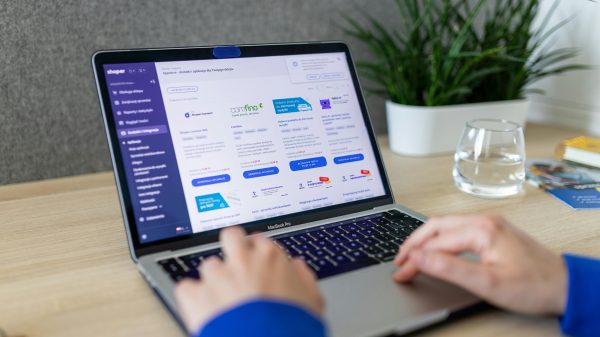For many small business owners, consultants, and freelancers, billing is one of the most frequent administrative tasks they handle. Every completed project, delivered product, or hour of work ultimately needs to be reflected in a clear request for payment. Using an invoice template makes this process significantly smoother. Instead of creating a new invoice from scratch each time, a reusable template provides structure, consistency, and clarity, helping ensure invoices look professional and payments arrive on time.
However, the value of a good invoice template goes beyond convenience. It is part of a larger system that supports credibility, financial compliance, and long-term business growth. When billing functions efficiently, businesses are better able to focus on what matters most: delivering services, generating revenue, and building customer relationships.
Why Professional Invoices Shape Business Perception
While many small business owners work hard to deliver great service, they often underestimate how much the presentation of their invoice influences the client’s perception of the business. An invoice is sometimes the last interaction in the customer journey, and first impressions matter just as much as final impressions.
A properly structured invoice communicates clarity and professionalism. It signals that the business is organized, trustworthy, and serious about maintaining standards. On the other hand, an invoice that is unclear, missing details, or poorly formatted can create confusion. Clients may hesitate to pay quickly, or misunderstand what the charges are for. This not only delays payment but can add unnecessary friction to what should be a smooth transaction.
When invoices are consistent and professional, clients feel more confident, and that confidence supports faster and more reliable payments.
Essential Elements Every Invoice Template Should Include
Although styles and layouts vary, certain information must always be included in an invoice. A strong template helps business owners provide this information automatically, without needing to remember each detail manually.
A good invoice typically contains the business name, address, contact information, and any branding elements such as a logo. This not only helps identify the sender but also reinforces the company’s identity. The invoice should clearly state the client’s name and contact information to avoid confusion, especially when businesses handle multiple clients at once.
The invoice must include an issuing date and a unique invoice number. These details are essential for communication between client and business, as well as for bookkeeping and taxation. The heart of the invoice is the itemized list of services or products provided. Descriptions should be detailed enough for the client to understand exactly what they are being billed for. The total amount due should be clearly stated, including any taxes, fees, or discounts.
Finally, the invoice should specify acceptable payment methods and the payment deadline. Without these elements, clients may unintentionally delay payment simply because they lack clear instructions.
Brand Identity and Trust Through Invoice Design
Invoices are not only financial documents; they are brand communication tools. A consistent invoice design reinforces how a business wishes to present itself: reliable, organized, and professional. By using the same layout, colors, font style, and logo across every invoice, businesses create a visual identity that clients recognize. This familiarity builds trust.
Even small design details, spacing, clarity of text, use of headings, influence how easy the invoice is to read. When clients don’t have to search for key information, payment becomes smoother and quicker.
Some businesses go a step further by adding brief personal touches, such as a thank-you line or a note acknowledging the project. These gestures, though small, can strengthen client relationships and encourage repeat business.
Digital vs. Paper Invoices: Why Digital Has Become the Standard
While paper invoices were once the norm, digital invoicing has become the standard for modern small businesses. Sending invoices electronically is faster, easier to organize, and more environmentally sustainable. Digital invoices can be sent instantly, stored securely, and retrieved whenever needed.
This transition is also influenced by the broader digital transformation of work. Many businesses operate remotely, clients are located across different regions or countries, and communication increasingly happens through email and online platforms. Digital invoices fit naturally into this reality. In addition, digital invoices can integrate with accounting software, financial dashboards, and automated systems, allowing for tracking, analytics, and reminders that paper simply cannot provide.
Paper invoicing still exists in certain industries, but for most small business owners, digital formats offer flexibility, efficiency, and easier management.
Cloud Storage and Accessibility: A Foundation for Organized Financial Management
Storing invoices in the cloud ensures that financial documents are available whenever needed, without digging through folders or physical files. Whether a business owner is traveling, meeting with a client, or working from home, cloud access ensures consistency and control. Cloud storage also helps accountants, administrators, and business partners collaborate easily.
If a computer fails or gets lost, cloud-stored invoices remain safe, protected by automatic backups and encryption. This makes cloud-based invoicing systems not only more convenient but also more secure.
The Growing Role of Automation in Invoicing
Automation is one of the most valuable developments in modern business administration. Many invoicing platforms can automatically generate recurring invoices for clients with monthly contracts, subscriptions, or ongoing service agreements. Automated reminders help ensure that overdue payments don’t go unnoticed. Automated calculation tools reduce the risk of error, helping maintain accuracy.
Over time, these small improvements add up to substantial time savings. Hours previously spent formatting, calculating, or following up on invoices can instead be used for revenue-producing activities.
Financial Compliance and Recordkeeping
Accurate invoicing supports legal and financial compliance. Small businesses must maintain proper records for taxes, audits, and general financial reporting. The U.S. Small Business Administration outlines guidelines for preparing and managing business taxes. Organized and consistent invoices make these processes significantly easier and less stressful. When billing formats are standardized, financial records become clearer and more reliable.
Avoiding Common Invoicing Problems
Many businesses run into preventable invoicing issues simply because their billing process is not structured. One frequent issue is sending invoices long after work has been completed, which can lead to delayed payment. Another problem occurs when invoices lack necessary details, forcing clients to request clarification before processing payment. These delays can cause strain on cash flow.
By using a reliable invoice template and a clear billing workflow, businesses minimize these risks. Following up politely but consistently on late payments can also help maintain steady income.
Choosing the Right Invoice Template for Your Business
When selecting or designing an invoice template, the most important factor is usability. The template should be easy to edit, adaptable to different clients, and structured for clarity. It should work across different platforms and export formats, so that invoices can be shared as PDFs, printed if needed, or integrated into accounting software.
A good invoice template supports the business, it does not slow it down.
For small businesses, invoicing is a fundamental part of financial management and client communication. A professional invoice template brings order and efficiency to the billing process, supports brand identity, and strengthens client trust. When combined with digital organization tools, cloud storage, and automation, invoice templates help businesses operate more smoothly, stay compliant with financial regulations, and maintain reliable cash flow.
By building a clear and consistent invoicing system, small business owners set the foundation for stability, scalability, and long-term success.















